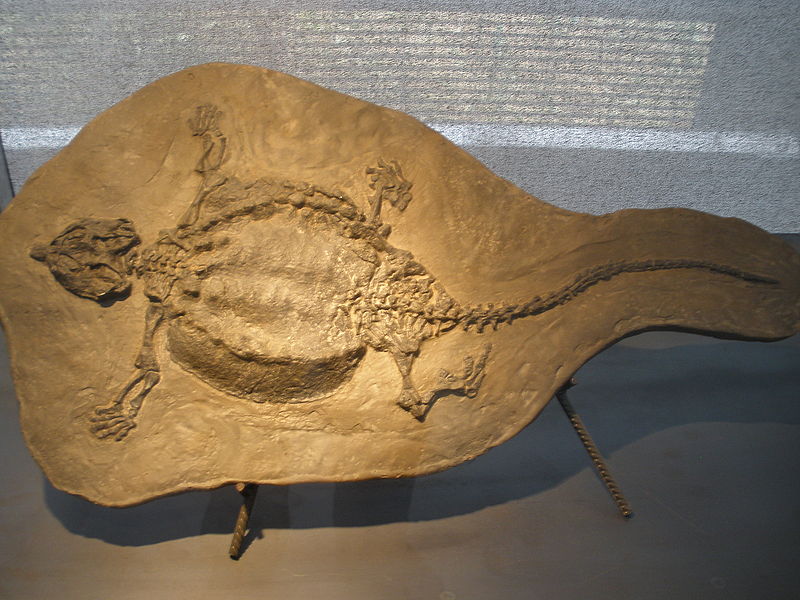Interactions
Animals that Tanystropheus longobardicus interacted with included small fish, carrion, and squid, which were apart of the organisms diet (see Nutrition). Some predators of T. longobardicus include Cymbospondylus natans, Coelophysis bauri and Postosuchus alisonae (see Reproduction). These predators also ate the eggs of T. longobardicus.
 Other marine organisms that were present
during the Middle and Late Triassic Era included marine fish and marine reptiles. Ichthyosaurs, meaning, “fish lizards”, were the most
successful group of organisms in the Mesozoic (Benton, 2008).
They were adapted for marine life with bodies that included no
neck, streamlined form, paddles, and fish-like tails. The
Ichthyosaurs reproduced sexually and gave birth to their
offspring live (Benton, 2008). Another group of marine reptiles
unique to the Triassic were the
placodonts, which means “pavement teeth”. They used
their unique incisors to feed on mollusks, such as oysters and
shellfish and used their teeth to crush the shells (Benton,
2008).
Other marine organisms that were present
during the Middle and Late Triassic Era included marine fish and marine reptiles. Ichthyosaurs, meaning, “fish lizards”, were the most
successful group of organisms in the Mesozoic (Benton, 2008).
They were adapted for marine life with bodies that included no
neck, streamlined form, paddles, and fish-like tails. The
Ichthyosaurs reproduced sexually and gave birth to their
offspring live (Benton, 2008). Another group of marine reptiles
unique to the Triassic were the
placodonts, which means “pavement teeth”. They used
their unique incisors to feed on mollusks, such as oysters and
shellfish and used their teeth to crush the shells (Benton,
2008).

Two groups of other long necked marine reptiles included the pachypleurosaurs and the nothosaurs. Just like T. longobardicus, these reptiles lived a marine lifestyle, only leaving the water to lay eggs on shore (Benton, 2008). The diet of the smaller pachypleurosaurs included small fish and crustaceans, while the larger nothosaurs ate ichthyosaurs and larger fishes (Benton, 2008).